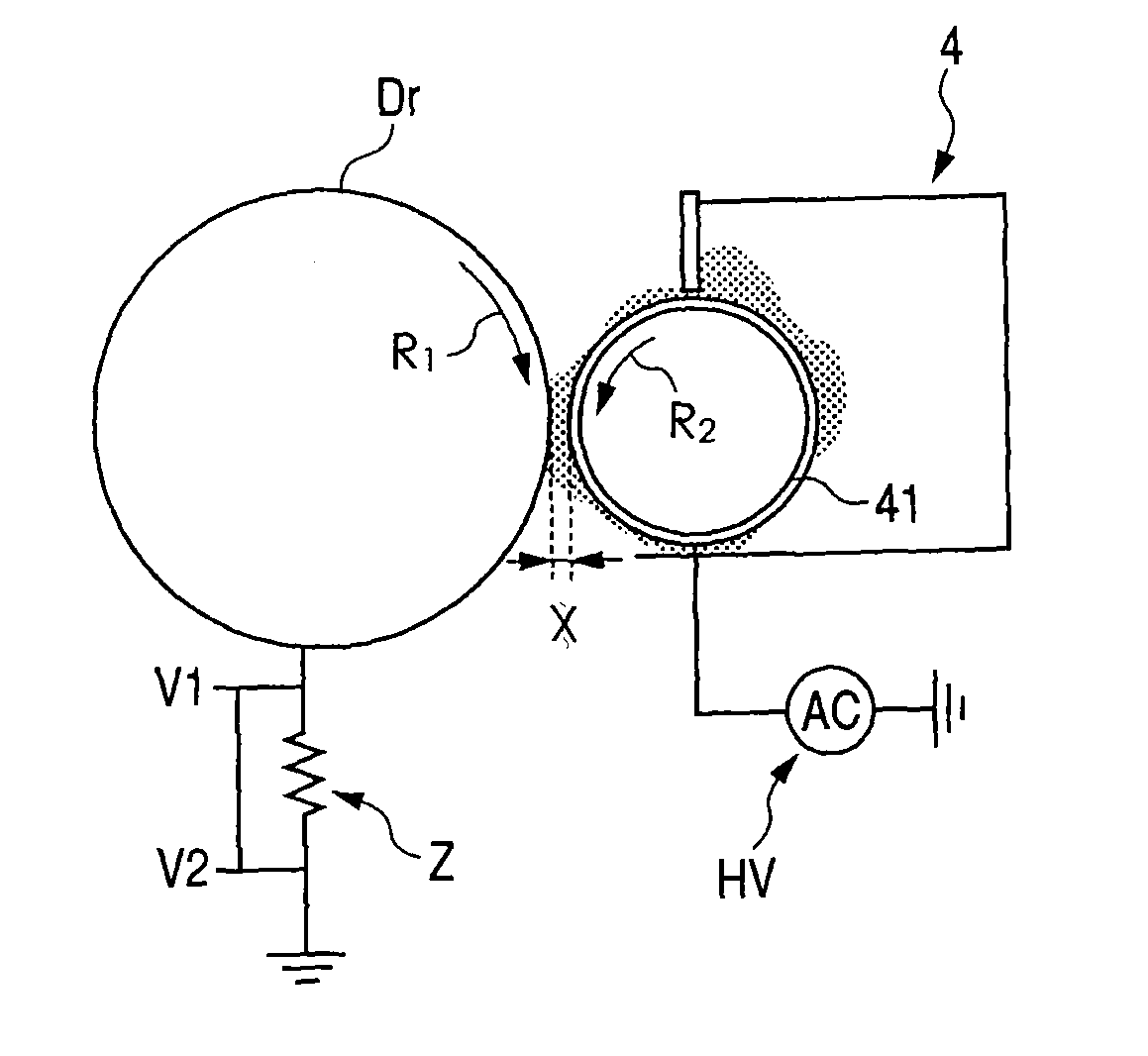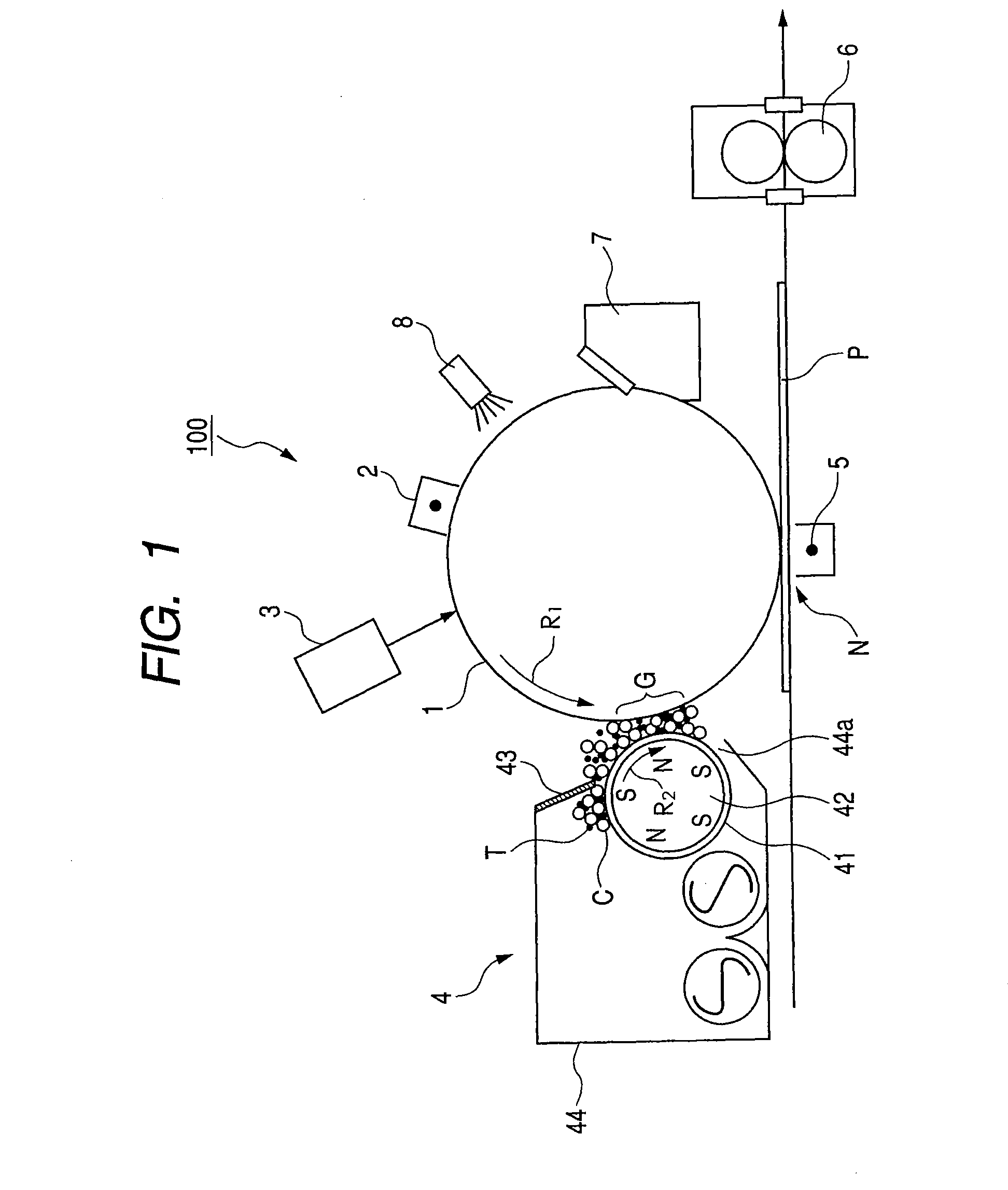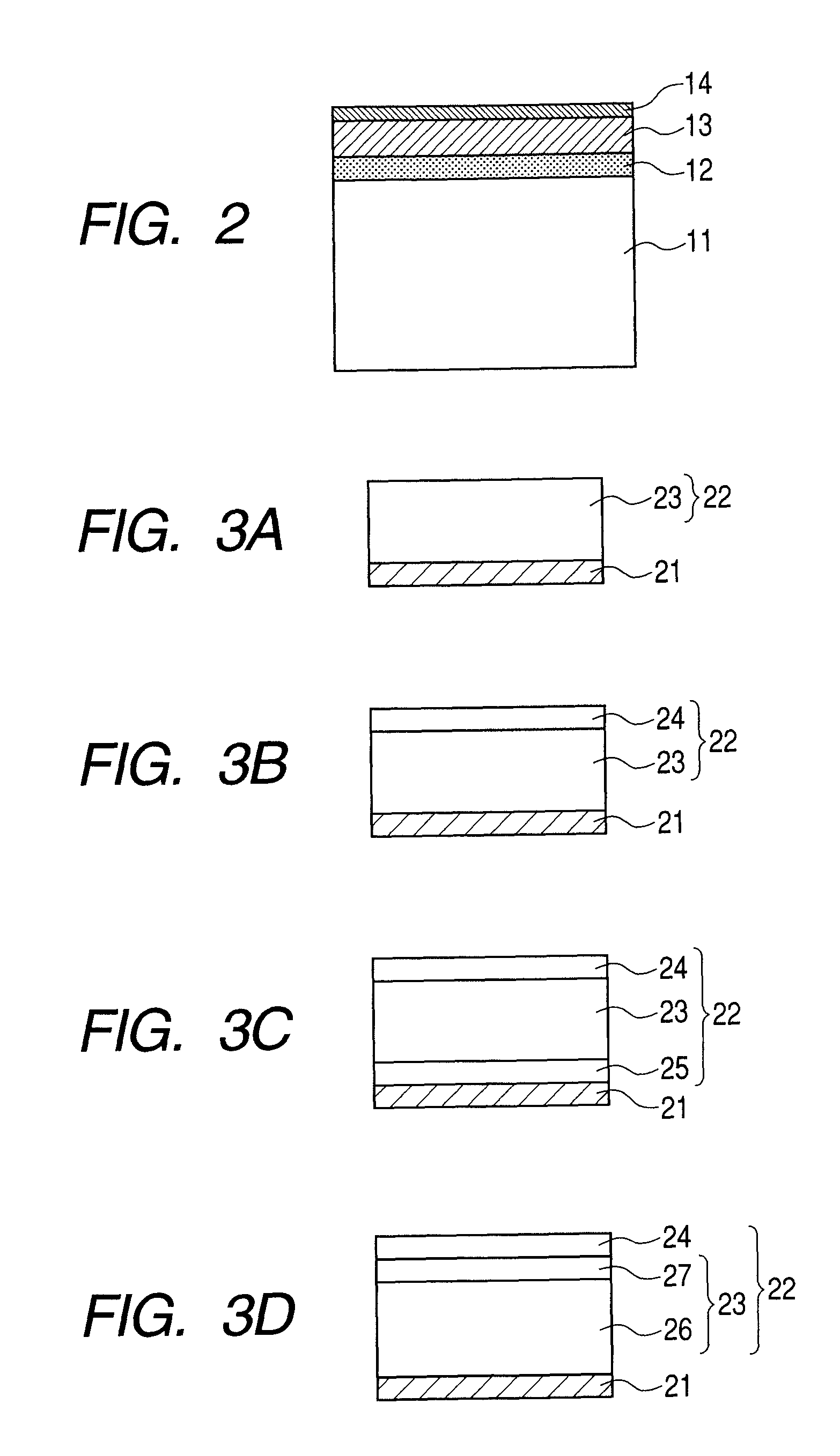Image forming apparatus using peak AC potentials to move toner toward an image bearing member and a developer carrying member, respectively
a technology of image forming apparatus and ac potential, which is applied in the direction of electrographic process apparatus, instruments, optics, etc., can solve the problems of easy disturbance of formed electrostatic image, low surface resistance, and disturbance of electrostatic image, and achieve excellent development properties
- Summary
- Abstract
- Description
- Claims
- Application Information
AI Technical Summary
Benefits of technology
Problems solved by technology
Method used
Image
Examples
first embodiment
[0068]
[0069]FIG. 1 illustrates the schematic, sectional structure of important parts of an image forming apparatus 100 according to an embodiment of the present invention.
[0070]The image forming apparatus 100 has a cylindrical electrophotographic photosensitive member (hereinafter simply referred to as “photosensitive member”) 1, which is a so-called photosensitive drum and serves as an image bearing member. Arranged around the photosensitive member 1 are a charger 2, which is a charging measure, an exposure device 3, which is an exposing measure, a developing device 4, which is a developing measure, a transfer charger 5, which is a transferring measure, a cleaner 7, which is a cleaning measure, a pre-exposure device 8, which is a pre-exposing measure, and the like. A fixing device 6 which is a fixing measure is placed along a direction in which a transfer material P is transported at a point downstream of a transfer portion N where the photosensitive member 1 and the transfer charg...
specific example
[0143]FIG. 13 illustrates a specific example of the electric potential of the electrostatic image on the photosensitive member 1 and the developing bias applied to the developing sleeve 41 in an actual developing operation. In FIG. 13, the axis of abscissa illustrates the time and the axis of ordinate illustrates the electric potential.
[0144]This specific example employs, as the developing bias, rectangular wave developing bias (alternating bias) in which Vpp=1.8 kV, the DC voltage component Vdc=−350 V, and a frequency f=12 KHz (one cycle: 83.3 μsec). This developing bias is applied between the electrostatic image on the photosensitive member 1 and the developing sleeve 41.
[0145]The electrostatic image in this specific example is formed by the image exposure method. The toner in this specific example is charged with negative electric charges by friction with the carrier. The developing method employed in this specific example is the reverse developing method.
[0146]VD in FIG. 13 repr...
PUM
 Login to View More
Login to View More Abstract
Description
Claims
Application Information
 Login to View More
Login to View More - R&D
- Intellectual Property
- Life Sciences
- Materials
- Tech Scout
- Unparalleled Data Quality
- Higher Quality Content
- 60% Fewer Hallucinations
Browse by: Latest US Patents, China's latest patents, Technical Efficacy Thesaurus, Application Domain, Technology Topic, Popular Technical Reports.
© 2025 PatSnap. All rights reserved.Legal|Privacy policy|Modern Slavery Act Transparency Statement|Sitemap|About US| Contact US: help@patsnap.com



